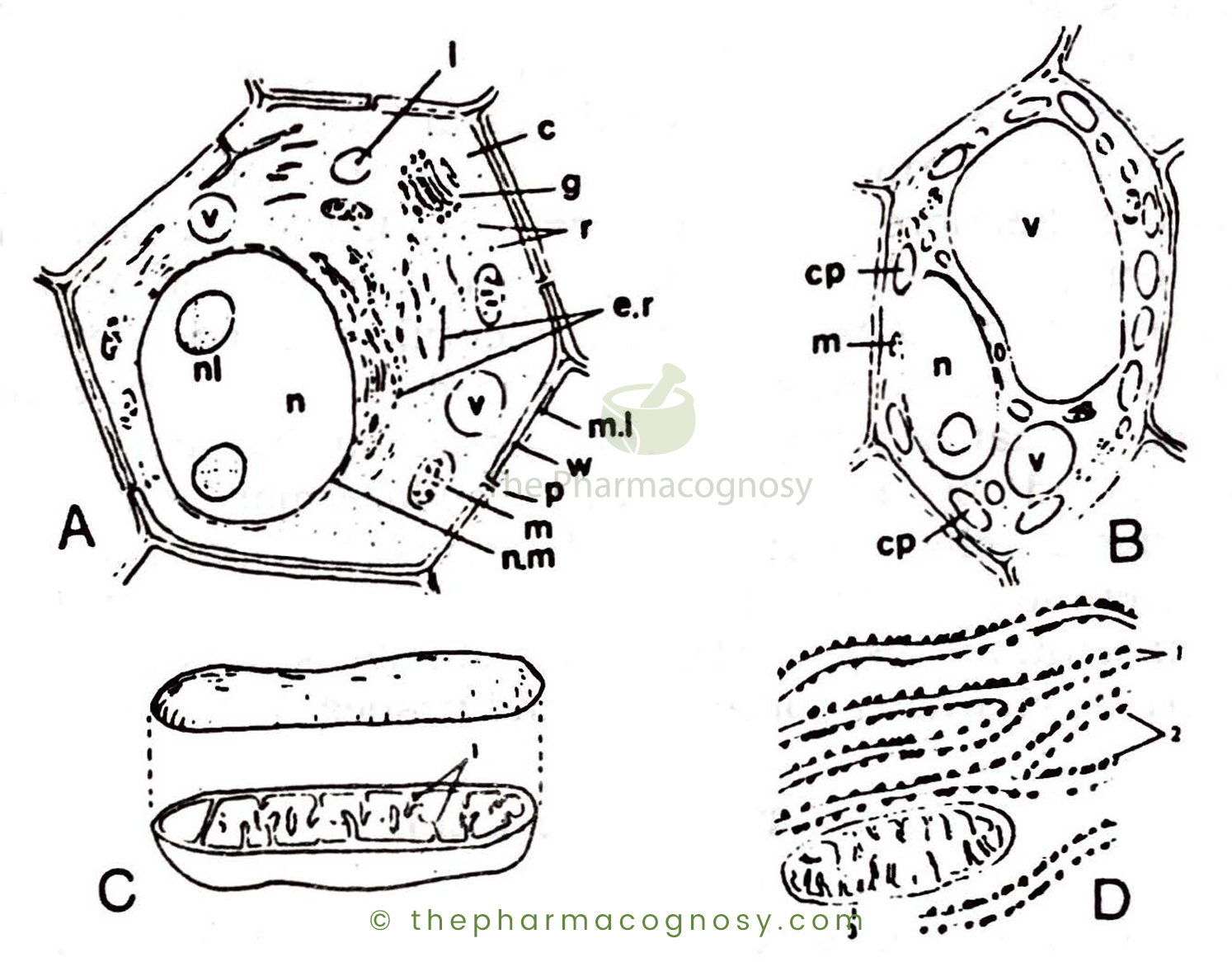Drugs are obtained from almost all forms of plants ranging from unicellular yeast to highly differentiated higher plants. Identification of these diversified drugs and their sources was formerly based on their morphological characters. These Characters are not always reliable, as many different closely related plants look similar in their apparent morphological features.
This is more so when drugs are obtained in powdered, Cut or broken form. Internal structural characters or units of plants are therefore taken into consideration for identification of plant drugs. The importance of histological or. anatomical characters of plant parts in their identification and detection of adulterants in them was first recognised in 1857 when Schleiden discovered that various types of Sarsaparilla roots could be distinguished by means of their endodermal cells.
A good knowledge of cellular structures of various plant parts is therefore very essential for a pharmacognosist dealing with plant drugs. In order to acquire this knowledge, one should be very familiar with the various characters of the cells and tissues’.
The Plant Cell
The cell is the structural and functional unit of all living organisms. The structural framework of all organs of a plant or animal made up of cellular units and all the biochemical reactions that make possible the life process of a living organism takes place within the cell. Since the crude plant drugs are made up of cells and tissues, the students should possess a good knowledge of the structures and organization of these cells and tissues present in the plant organs that constitute the crude drugs.
This knowledge is essential for meaningful study and correct identification of these drugs. Not only that, cells being the main seats of biochemical synthesis of all chemical substances, which are the actual active substances responsible for the Pharmacological properties and therapeutic activities of all crude drugs, the study of the cells and tissues is important for the pharmacy students dealing with crude plant drugs.
Structure of the Plant Cell
Cells vary in size and shape. In shape, they may be spherical oval, polygonal, rectangular or elongated. The average size of a cell varies from 10-100 µm. In order to understand the internal characters of various plant organs and to appreciate the different biochemical processes involved in the production of chemical constituents in them, it is necessary to have some knowledge of the structure and constitution of a living plant cell.

Fig. 1: The Plant cell. A, diagrammatic representation of an undifferentiated cell: c, cytoplasm; e.r, endoplasmic reticulum; g, Golgi apparatus; 1. lysosome; m, mitochondrion; m. 1, middle lamella; n, nucleus; nl, nucleolus; n.m. nuclear membrane; p. pit; r, ribosomes; w, primary wall; v, vacuole. B, a green plant cell: cp, chloroplast; m, mitochondrion, n, nucleus; v, vacuole, C, diagrammatic section of mitochondrion: 1, cristae, D, portion of the rough endoplasmic reticulum: 1, membranes; 2, ribosomes; 3, mitochondrion (Reconstructed from Trease & Evans).
A mature living plant cell consists of three parts:
- The cell wall
- The cytoplasm and
- The vacuole.
